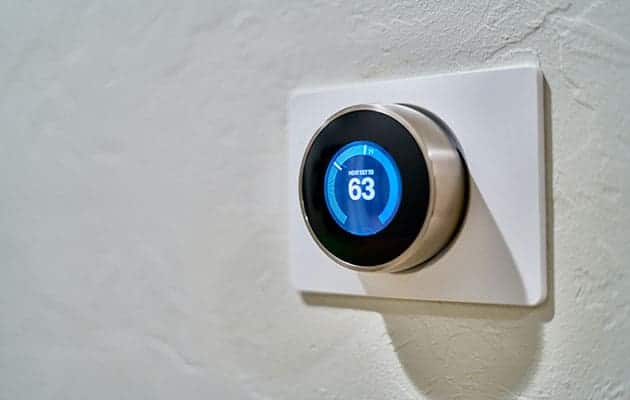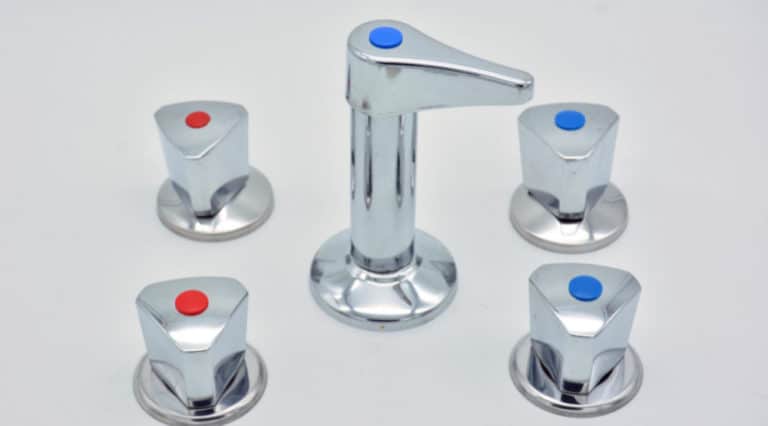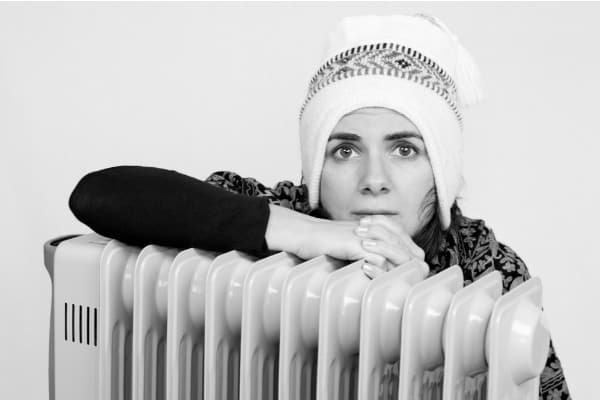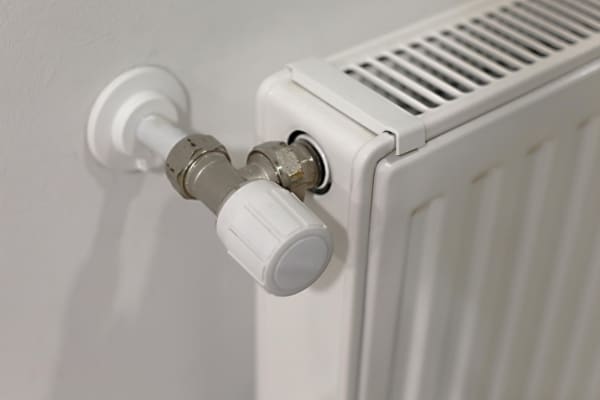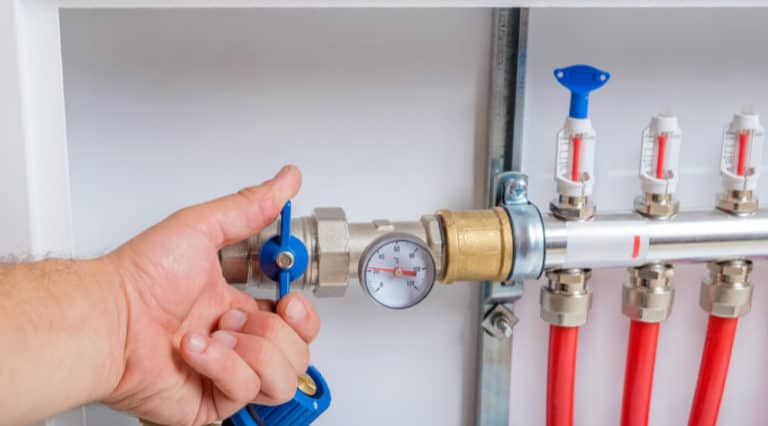Find My Local Expert Is your Heater Energy-Efficient? Most people...
Read More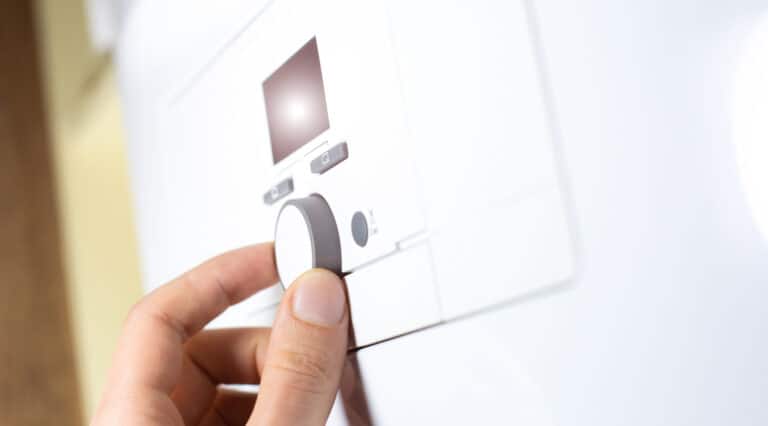
Ideal Boiler Flow Temp: Optimizing Your Central Heating Efficiency
Are you looking to save money on your energy bills and have a more efficient central heating system? Adjusting the flow temperature of your boiler is an effective way to do so.
The right boiler flow temperature setting can help you save money and maximize the efficiency of your central heating system. In this article, we’ll discuss what boiler heating flow temperature is, what type of boiler you need, and how to adjust it for optimal results. We’ll also explore how much you could save with a new setting and any changes you may notice in your heating system. So let’s get started!
What is Boiler Flow Temperature?
The boiler flow temperature is the temperature at which hot water is distributed throughout the home and is determined by factors such as insulation levels and special requirements for vulnerable household members. Understanding and controlling your boiler flow temperature can go a long way in helping you save money on energy bills – so it’s important to get it right!
Adjusting the flow temperature of your boiler isn’t always easy, but it’s worth doing if you want to reduce your energy or heating bills and maximize efficiency. So take some time to read up on the different types of boilers out there and find one that meets your needs best!
If you want to reduce your energy usage, it’s worth adjusting the flow temperature of your boiler to a lower level. This will ensure that your boiler is running at its maximum efficiency. Bear in mind though that temperatures below 50°C are usually recommended for modern homes with underfloor heating, while higher temperatures are better suited for conventional gas boilers and hot water cylinders. To adjust the flow temperature of your boiler, consult your user manual or call a heating engineer for help.
How does one go about reducing the boiler flow temperature?
Lowering the flow temperature of a boiler can result in cost savings on energy bills. What steps can be taken to reduce it?
Most modern boilers have a thermostat that allows you to adjust the temperature, so check your user manual for instructions on how to adjust the temperature setting. Generally speaking, a lower flow temperature means you’ll use less energy and save money – but it could take longer for your home to heat up. The recommended flow temperature for most homes is 60°C, although if your home is well insulated you may be able to reduce it further.
In case someone in your household is sensitive to cold, for instance, an elderly family member or an individual with a health condition, it’s important to avoid setting the flow temperature below 60°C. It’s also important to keep an eye on your hot water cylinder and digital display (if applicable) – these should both stay at the same temperature as the boiler flow temperature setting. Finally, if in doubt always consult with a qualified heating engineer who will be able to advise you on what’s best for your home and boiler model.
In any case, there are several factors when doing this, so its always best to keep in mind the levels of insulation, how big your boiler or radiators area and the thermostat temperature in your home.
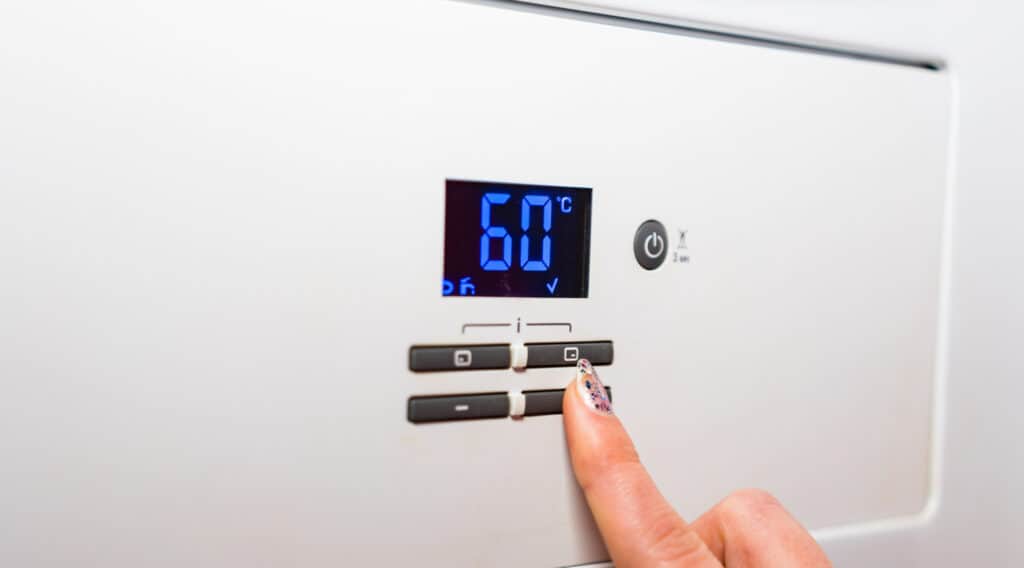
What is the optimal temperature for flow?
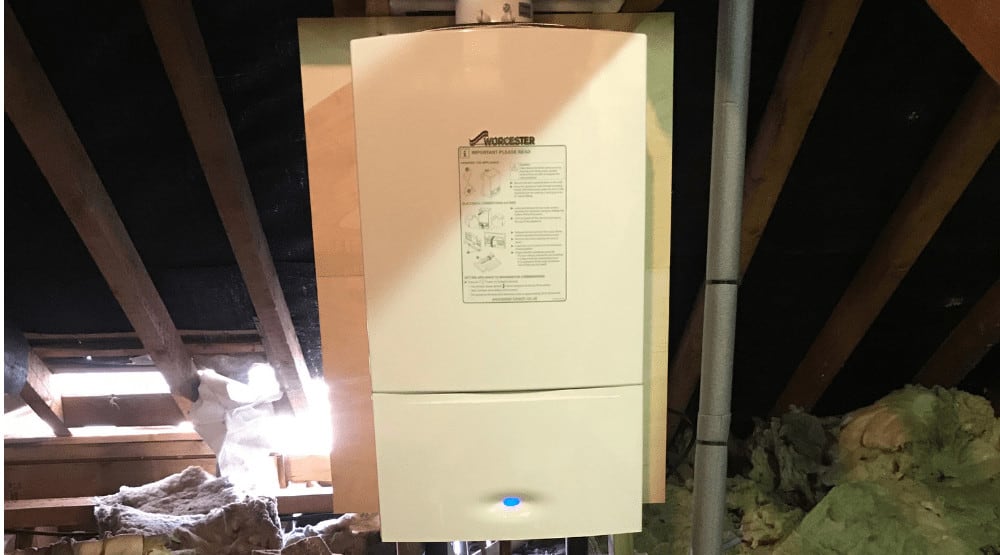
Finding the best flow temperature for your gas boiler and central heating system can help you to save money on your energy bills, as well as ensuring that your home heats up quickly and efficiently. As a general rule of thumb, a flow temperature of 60°C or slightly lower if your home is particularly well insulated.
However, the best flow temperature for your home will depend on a few factors such as the type of boiler you have, the user manual instructions, return temperatures and the thermostat settings.
Most modern boilers have a digital display that allows you to easily adjust the flow temperature. Your user manual should provide instructions on how to do this, or you can call a heating engineer for help. Generally, most boilers are set to a factory-default flow temperature of around 70°C, but this may vary between models. Temperatures below 50°C are usually recommended for modern homes with underfloor heating, while higher temperatures are better suited for conventional gas boilers and hot water cylinders.
The most common types of boilers are Combi Boiler, Heat-only and System boilers, each with their own recommended flow temperatures. For example, a Combi boiler should be set between 50-65°C whereas a System boiler might require higher return temperatures; between 65-80°C
Before making any changes to your boiler’s flow temperature setting, it’s important to check your user manual and ensure that all safety requirements are met. If possible, try to set up a digital display on your boiler so that you can monitor it easily – this will allow you to make adjustments as needed without having to constantly check the user manual. Once you’ve found the ideal setting for your home, remember to keep an eye on it every now and then in case any changes need to be made – this can help you stay on top of any potential gas bill savings!
If I make some changes, would I be able to tell the difference in my heating system?
Yes, you will definitely notice changes in your heating system when you adjust the flow temperature. The most obvious change is that it will take longer for your home to heat up. This is because the hot water circulating through the system is cooler and needs more time to do its job of warming up your radiators. You may also find that your radiators are not as hot as usual – this is because lower flow temperatures mean that less energy is being used to heat them. However, if you have a modern boiler and good levels of insulation, you may not feel any difference at all in terms of comfort levels in your home. Finally, if you have a digital display on your boiler then you should be able to check the return temperature on there to make sure it’s running correctly.
How much could I save?
Reducing the flow temperature of your boiler whether it would be a combi boiler, conventional boiler or a system boiler is a great way to save money on your energy bills. Depending on the type of boiler you have, and where you set the temperature to, you could save between 8%-13% each year. The savings will vary depending on how much energy you use and the type of boiler you have. If you have an older conventional boiler, it may be worth investing in a modern model as these can be much more efficient. In addition to installing a new model, make sure that any existing pipes are lagged or insulated to reduce heat loss and keep temperatures lower for longer. For those with underfloor heating systems, setting your thermostat at a lower temperature will help reduce costs while still keeping your home warm.
Remember that reducing the flow temperature too low is not advised as it can be unsafe for those living in the home who are more vulnerable to cold temperatures. Make sure that you read through your user manual or contact a qualified heating engineer if in doubt so that they can advise what is best for your system.

Where can I get more help?
If you’re unsure of how to adjust the flow temperature on your boiler, or even if it can be adjusted, then don’t worry – getting help is easy. Your first port of call should be the instruction manual that came with your boiler. It should contain all the information you need to adjust the settings correctly and safely. If you’ve misplaced your manual, most manufacturers make them available online. You’ll just need to search for their name and your boiler’s model number. Alternatively, if you’re still feeling a bit stuck, then hiring a local heating engineer is always an option. They will be able to advise on what settings are best for your system and can also check for any issues with your boiler at the same time.
Do I Need A New Boiler?
If you’re in the market for a new boiler, there are a few things to consider. Firstly, you should think about what type of boiler is best suited to your home’s needs. Combi boilers are popular choices as they provide both hot water and heating from one appliance. These systems work without the need for hot water cylinders or tanks, making them ideal for modern homes with limited space. Conventional boilers are also an option and tend to be more suitable for larger properties with multiple bathrooms, as they require separate hot water cylinders and cold water storage tanks.
It’s important to choose the most efficient boiler model which meets your needs – this will help reduce energy bills in the long run. You can check out online reviews and speak to experienced installers to get an idea of what type of boiler could work in your home. Additionally, make sure that you read the user manual carefully before setting up your new boiler so that you can be sure you have all the information needed to set it up correctly!
Conclusion
In conclusion, finding the best boiler flow temperature setting for your central heating system is crucial for maintaining energy efficiency and reducing your overall heating costs. By considering factors such as your home’s insulation, the type of boiler you have, and the desired comfort level, you can determine the ideal temperature setting for your system. It’s important to remember that small adjustments can make a big difference, so regularly monitoring and adjusting your settings can help you achieve optimal performance and savings. With these tips in mind, you can ensure that your central heating system is running efficiently and effectively throughout the year.
You May Also Like...
Hot and Cold Water Knobs Not Working
Find My Local Expert Hot and Cold Water Knobs Not...
Read MoreFree Storage Heaters for UK Pensioners
Find My Local Expert Free Storage Heaters for UK Pensioners...
Read MoreEasy Ways to Bleed and Maintain your Boiler
Find My Local Expert Easy Ways to Bleed and Maintain...
Read MoreBoiler Losing Pressure: Here’s how to fix it!
Find My Local Expert Boiler Losing Pressure? Here’s How to...
Read MoreNeed A New Boiler?
My Trusted Expert Guarantee
Experts Have Been Vetted & Approved
